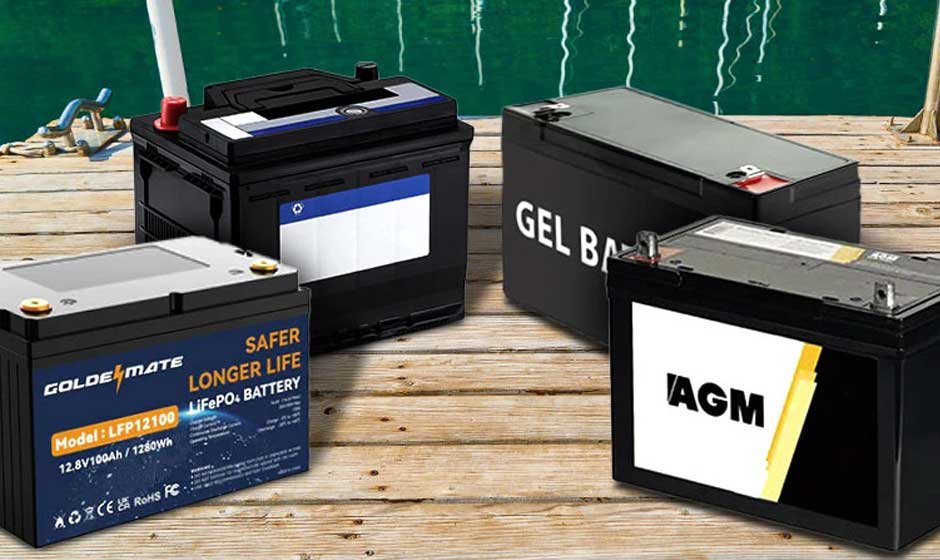Choosing the right marine battery can be daunting, but it’s essential for your boat’s performance. Marine batteries typically fall into three main categories: starting batteries, deep cycle batteries, and dual-purpose batteries.
Starting batteries are designed to provide a high burst of current to start your boat’s engine. In contrast, deep cycle batteries are built for sustained power delivery, making them ideal for continuous use. Dual-purpose batteries effectively combine the features of both types, offering flexibility for various applications.
Let’s dive into the detailed differences among these batteries.
Exploring Types of Marine Batteries: Basic Differences
Marine batteries play a vital role in powering various functions on your boat, ensuring that everything from the engine to onboard electronics operates smoothly. Each type of marine battery is designed for specific needs and applications, making it essential to understand the differences. Let’s delve into the most common types: starting batteries, deep cycle batteries, and dual-purpose batteries.
Starting Batteries: Powering Your Boat’s Engine
Starting batteries, also called marine cranking batteries are akin to sprinters, engineered to deliver a quick, high-power burst to start your boat’s engine. They achieve this through a unique design that features numerous thin plates, which create a large surface area for short, high-amperage output. This allows for rapid energy release when you need it most.
However, starting batteries come with two primary limitations. First, they are generally fragile and can be easily damaged in high-impact environments, such as rough seas or during bumpy rides. Second, they have a low tolerance for deep discharges; repeated deep cycling can significantly shorten their lifespan. As a result, starting batteries are best used for their intended purpose—providing the initial surge of power to start the engine—rather than for prolonged power needs.
Deep Cycle Batteries: The Marathon Runners
In contrast, deep cycle batteries are the marathon runners of the marine battery world. They are designed to provide a steady power output over extended periods, making them ideal for supplying power to the boat’s electrical systems when charging sources are not available. With thicker plates and high antimony content, deep cycle batteries can withstand repeated deep discharges without suffering damage, allowing them to recover fully after being drained.
These batteries are typically used to power essential equipment such as lights, GPS systems, fish finders, and other electronics aboard your boat. Their robust design enables them to deliver consistent power, making them indispensable for longer trips where access to charging might be limited.
Dual-Purpose Batteries: The Versatile Choice
For boaters seeking a balance between starting and deep cycle capabilities, dual-purpose batteries offer a versatile solution. These batteries are designed to handle deep discharges better than starting batteries while providing a higher storage capacity compared to deep cycle batteries. This combination makes them particularly suitable for small powerboats and sailboats, where space for multiple batteries is limited.
Dual-purpose batteries can power the engine’s starting requirements while also supporting electrical loads, making them ideal for boats that require both functions without the need for separate battery systems. This flexibility is especially beneficial for recreational boaters who may not have the luxury of extensive battery storage.
In Summary
Understanding the types of marine batteries—starting, deep cycle, and dual-purpose—can help you make informed decisions about your boat’s power needs. Each type has its distinct advantages and limitations, tailored for specific applications. By selecting the right battery for your boating activities, you can ensure reliable performance and prolong the life of your battery system, making your time on the water more enjoyable and worry-free.
FAQs about Marine Batteries
- Can I use a car battery in my boat?
While car batteries can technically be used in boats, they are not ideal. Car batteries are primarily designed for starting engines and may not withstand the deep discharges required for powering onboard electronics. It’s best to use marine-specific batteries for better performance and safety.
- How often should I charge my marine battery?
Marine batteries should be charged after every use, especially if they have been deeply discharged. Regular maintenance charging helps prolong battery life. It’s also a good idea to check the battery’s charge level periodically.
- What are the signs that my marine battery is failing?
Common signs of a failing marine battery include difficulty starting the engine, a significantly reduced runtime for electronics, swelling or bulging of the battery case, or a noticeable drop in voltage when tested.











